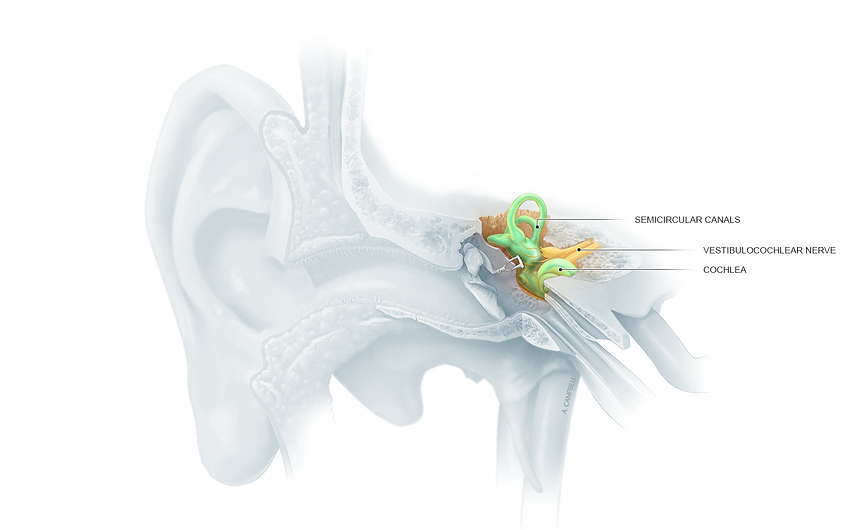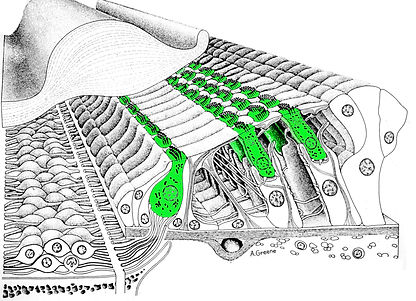The Inner Ear

What is the Inner Ear?
The inner ear is the most delicate and complex part of your hearing system — and where sound transforms into signals your brain can understand. It’s hidden deep within your skull, but it plays an essential role not only in hearing but also in your balance and spatial awareness.
The inner ear includes:

-
Cochlea: A spiral-shaped structure that converts sound vibrations into electrical signals sent to your brain
-
Semicircular Canals: Fluid-filled loops that help you maintain balance and coordination
-
Auditory Nerve: The nerve pathway that carries hearing information directly to your brain for processing
The inner ear’s intricate design is what allows you to hear the world clearly and stay steady on your feet.
The inner ear includes:
What Does the Inner Ear Do?
The inner ear is where mechanical sound becomes electrical information your brain can understand. Here’s how it works:
-
Sound vibrations from the middle ear enter the cochlea
-
Inside the cochlea, thousands of tiny hair cells respond to different sound frequencies
-
Those hair cells create electrical signals sent along the auditory nerve to your brain
-
The semicircular canals work alongside your inner ear to keep your body balanced and aware of movement
Without a healthy inner ear, your hearing clarity, sense of direction, and even your balance can be affected.
Common Inner Ear Conditions
Inner ear problems often cause both hearing loss and balance issues. Some examples include:
-
Sensorineural Hearing Loss: Damage to the hair cells or auditory nerve
-
Ménière’s Disease: Inner ear fluid imbalances causing hearing loss, vertigo, and tinnitus
-
Acoustic Neuroma: A benign growth on the auditory nerve affecting hearing and balance
-
Labyrinthitis or Vestibular Neuritis: Inflammation in the inner ear causing dizziness and hearing changes

Sensorineural Hearing Loss

Ménière’s
Disease

Acoustic Neuroma

Vestibular Neuritis
If you experience sudden hearing loss, vertigo, or chronic balance problems, seeing an ENT or hearing specialist is important. At Clarity Hearing Care, we help patients manage hearing loss related to inner ear conditions, with tailored solutions like hearing aids or referrals for further care when needed.
Did You Know?
The cochlea in your inner ear is about the size of a pea — but it contains over 15,000 microscopic hair cells, each tuned to detect different sound frequencies.


Want to learn even more?
Check out the video below for a deep dive into the anatomy of the Inner Ear!
